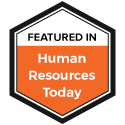2 minute read:
We recently covered the ins and outs of the ACA’s Form 1095-C. Now, we will be covering the new codes that are anticipated for the 2020 tax year as they pertain to Individual Coverage Health Reimbursement Arrangements.
The Individual Coverage Health Reimbursement Arrangement (HRA) according to HR.gov, is “a specific account-based health plan. It allows employers the ability to better control costs by providing defined non-taxed reimbursements to employees for qualified health insurance costs, like monthly premiums for individual market plans purchased through the Marketplace or private insurance companies.”
Following the issuance of a new rule issued pursuant to President Trump’s Executive Order No.13813, new codes, as shown in the Draft IRS Forms 1095- C for the 2020 reporting year relating to individual coverage HRAs have been introduced for the 2020 tax year. The rule essentially allows employers to use individual coverage HRAs to reimburse employees for the cost of health insurance coverage purchased in the individual health insurance marketplace in order to satisfy their ACA Employer Mandate requirements.
This final rule went into effect on August 19, 2019, and became applicable to plans starting in January 2020.
Without further ado, a breakdown of the new codes to be entered on Line 14 of the 1095-C Form as provided in the new IRS draft forms:
1L. Individual coverage health reimbursement arrangement (HRA) offered to an employee with the affordability determined using the employee’s primary residence ZIP Code.
1M. Individual coverage HRA offered to an employee and their dependent(s) with the affordability set using the employee’s primary residence ZIP Code.
1N. Individual coverage HRA offered to an employee, their spouse, and any dependent(s) with affordability determined by the employee’s primary residence location ZIP Code.
1O. Individual coverage HRA offered to an employee only using the employee’s primary employment site ZIP Code affordability safe harbor.
1P. Individual coverage HRA offered to an employee and their dependents (not spouse) using the employee’s primary employment site ZIP Code affordability safe harbor.
1Q. Individual coverage HRA offered to an employee, their spouse, and dependent(s) and using the employee’s primary employment site ZIP Code affordability safe harbor.
1R. Individual coverage HRA that is NOT affordable offered to an employee; employee and spouse or dependent(s); or employee, spouse, and dependents.
1S. Individual coverage HRA offered to an individual who was not a full-time employee.
Employers who need assistance in understanding the traditional, recurring 1095-C codes should review our guide here.
Failing to accurately populate your 1095-C forms with the respective codes is one of the fastest ways of putting your organization at risk of receiving IRS penalty assessments. The tax agency is currently issuing penalties for the 2018 tax year. Contact us to learn about how ACA Complete can handle the population of forms 1095-C as well as the filing and furnishing requirements.







